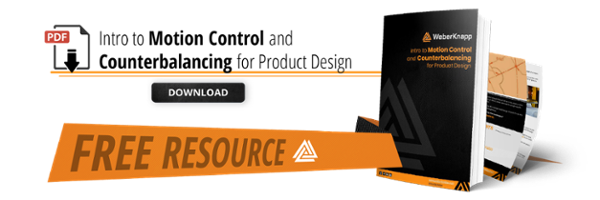Why bother with chemistry and electronics when you can get great performance from sturdy, reliable mechanical motion control?
While not all hinges use mechanical springs, they’re often the go-to choice over fickle gas springs and expensive electronic motion control. Mechanical spring design combines affordability, reliability, and versatility to enhance product safety and performance.
There are multiple types of mechanical springs to choose from, each offering specific benefits and uses. Keep this guide on hand, and you’ll always find a solution for your motion control needs.
7 Mechanical Spring Design & Applications for Each
Motion control basics start with the simple-yet-complicated spring. Spring-loaded mechanism design usually starts with one of these seven concepts:
- Compression
- Extension
- Torsion
- Constant force
- Spring clip
- Belleville
- Volute

1. Compression Springs
This kind of mechanical spring design stores energy or force when compressed. As it expands, it releases energy. Compression springs are wound with spaces between the coils to store specific energy loads.
For example, when you close a lid with a compression spring hinge, it compresses the spring to get more torque to counterbalance the lid. As you open the lid, the energy is released and assists the user in opening the lid easily. Just like that, you can make a 75-lb. lid feel like 5 lbs.
When to use them: Compression springs are not just used for counterbalancing, but also to save space. They can be found in switches, vehicle suspensions, and -- most famously – in jack-in-the-boxes.
2. Extension Springs
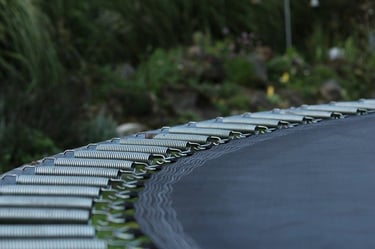
Extension springs are the opposite of mechanical compression springs. As you stretch the spring, the force increases.
They are initially wound with a specific level of tension. Most extension springs require significant force to even get them to start to move. There are some exceptions that require 0 initial tension -- they’ll start to immediately spread out when you apply force.
Many extension springs have hooks on the ends. Hooks allow you to attach them to two points and use them to prevent initial separation -- and pull those points back together when they’re separated by the tension.
When to use them: One way extension and compression spring hinges are alike is that they’re capable of counterbalancing. Whether you use compression or extension depends on the application and direction of motion you need.
Extension springs are common in screen door hinges, trampolines, and garage door hinges.
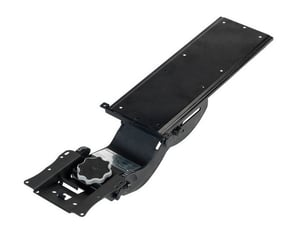 3. Torsion Spring
3. Torsion Spring
These are wound similar to extension springs but have legs that come off at different angles. By pushing the legs, you generate clockwise and counterclockwise torque.
A spring-loaded mechanism design can employ torsion springs to store energy from twisting motions and release that energy in opposite motions
When to use them: Engineers use torsion springs on …
- Saloon-style doors
- Ramps for horse trailers, to make them easier to open
- Keyboard mechanisms, for easier up-down motion
 4. Constant Force Spring
4. Constant Force Spring
A constant force mechanical spring hinge will deliver force no matter how far you extend the spring.
Think of the tape measure in your toolbox. A tape measure retracts with the same energy whether it’s a few inches or 5 feet out of the casing. If you used a compression spring instead, it would pull back more aggressively as you tried to extend it.
When to use them: These are ideal for any type of lift mechanism where you have a known weight, such as TV or computer monitor lift mechanisms.
Have questions about Ergonomic equipment? Check out our free Managers Equipment guide below:
 5. Spring Clip
5. Spring Clip
A spring clip is extremely simple -- just a bar of material either round or rectangular.
If the spring features a round material, the more general term for a spring clip is “wire form.” If a rectangular material is used, it may be called a flat spring (even if it has a form in it). "Flat" refers to the material, not the shape of the spring. You may have also heard of a leaf spring, which is a horsubcategory of flat springs.
Spring clips are generally U-shaped, but there are exceptions.
More importantly, they absorb energy -- when you bend one, it applies force in the other direction.
When to use them: Diving boards are the classic example of spring clip design. You can also find them in wagons and buggies, car suspensions, and other industrial spring hinges.
6. Belleville Spring
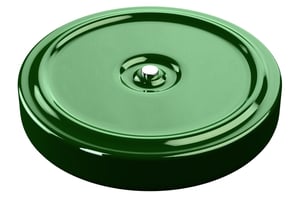
Belleville springs, also called Belleville washers and disc springs, are typically disc-shaped washers with a hole in the middle for bolts to pass through. They offer a specific load and deflection in places where you know your design will sustain wear over time. These springs help components remain in contact with one another by providing compression.
Now for the fun part: You can stack Belleville springs in different ways to alter the force you get out of them. You can stack them in the same direction to increase the spring rate or in different directions to decrease the spring rate, depending on your need.
When to use them: Engineers primarily use Bellevilles in applications that require an extremely high level of force over a small deflection. In many cases, Belleville springs are used to replace coil springs where space is tight.
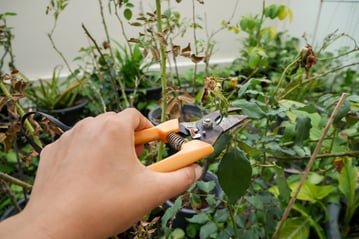 7. Volute Spring
7. Volute Spring
These are wound into a spiral. When you compress them, they become very compact and flat.
Volute springs resemble the ice cream portion of a soft-serve cone. (OK, maybe that’s a stretch.) When a volute spring is compressed, its smaller coils slide inside its larger coils, shrinking the spring’s length far more than traditional compression springs.
When to use them: Volutes are a less common spring type, but you often can find them in garden shears. Thanks to their high load-bearing capacity, they’re perfect for situations where you need shock absorption.
Fitting Into the Big Picture
Mechanical spring hinges come with many flavors of spring components (none ice cream-flavored, unfortunately). Each has its own way of offering motion control, whether you need pushing, pulling, twisting, or something else.
To get a better taste of what hinge type works best with your product line, check out the free guide to mechanical motion control below:
[Editors note: This blog was produced in February 2020 and was updated in April 2022 to reflect current information.]
.png?width=12000&height=2033&name=WeberKnappLogo_white%20(1).png)

